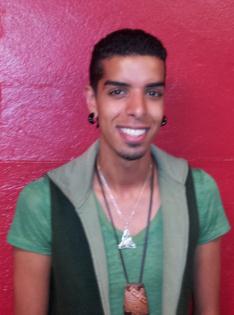For many queer youth, the summer camp experience can sear like sunburn.
If you’re seeking shade from the heat of social pains, Project Acorn promises to be a soothing alternative by providing a safe and liberating summer camp space for young adults to be themselves and grow from saplings into strong oaks.
Founded in 2004, Project Acorn is a sister program of the Ten Oaks Project, a weeklong sleep-away camp for queer youth ages eight to 17; Acorn is exclusively for queer youth ages 17 to 24. Both camps were created in response to the lack of summer programming for queer youth.
Although Acorn is touted as a camp for queer youth and youth from queer families, attendees will never be asked to state their sexual or gender identity; staff members say the retreat is for everybody.
Acorn’s theme this year is Weaving Our Way, with the goal of entwining participants from varied backgrounds into one complete community.
“This year will take on the old idea of Project Acorn but with a new twist,” Acorn Youth Advisory Committee (YAC) member Kamilla Riabko says. “We’re all coming from different places but still weaving our way together as one community. That will bring a new and different spark to the magic of Project Acorn.”
Entrants will have the opportunity to attend workshops that address queer-centric issues such as activism and gender identity, be educated by knowledgeable speakers, and participate in traditional Canadian summer camp pastimes.
When Myron Khatheer first attended Project Acorn, he says, he didn’t know what to expect.
“The first year was just so magical. The first day there are such intense emotionally bonding activities that by the fourth day you’ll feel like you’ve known each other forever,” he says.
Khatheer says the experience changed his life and opened him up to a forest of friendship. He now works as a YAC member at the camp and urges anyone considering branching out with Acorn to apply.
“A lot of people don`t have a community where they are safe to explore their identities, explore their styles, explore different people or explore their relationships,” he says. “At Project Acorn it really empowers us to explore, play and have fun.”
Campers are encouraged to challenge themselves by choice and will never be forced to participate in activities, unlike most summer camps, Khateer says.
“We empower you to take risks because where else are you going to be this safe and this supported? It’s really up to you on what you want to get out of it. It’s there for you to engage in. I think it’s the most empowering experience LGBTQ youth or youth from a LGBTQ family can experience.”
The deadline for applicants is Friday, June 1 at 5pm. Visit Project Acorn’s application page to plant your seed.
Project Acorn
Thurs, July 19–Sun, July 22
Camp Bonnefant, Ottawa
Follow Xtra reporter Bradley Turcotte on Twitter @XO_reporter.


 Why you can trust Xtra
Why you can trust Xtra


